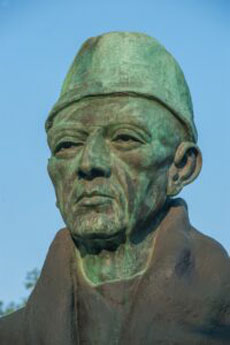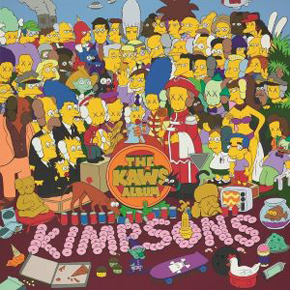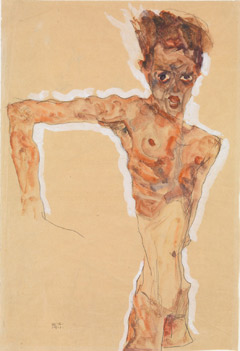1.8.25 — Majesty and Temptation
To pick up from last time on early Renaissance Siena, against that background, the show can afford to stick to a small but significant circle of artists. Duccio had an heir in Simone Martini, a student.
Two other likely students, the brothers Pietro and Ambrogio Lorenzetti, kept separate workshops but stayed close in style and everything else. The Met speculates that two of their panels once hung together as a diptych. (It cannot point to hinge marks or external evidence.) It ends with Martini to bring the story back to its source.
Duccio has his hand everywhere. Whenever a man at the cross raises a lance without piercing the side of Jesus, he quotes Duccio and the artist’s love of crowds. In fact, pretty much any genre quotes Duccio on account of a single altarpiece, the Maestà, commissioned in 1303, with close to fifty panels. It takes its name, meaning majesty or triumph, from the largest panel, front and center, of an enthroned Madonna. The ranks of angels to either side do little but add color, like the rhythms of a song celebrating her glory. One can practically hear it.
One cannot hear much else. Losers do not write history, but artists and poets do, and they had begun to erase Siena from Renaissance history before its work ended. Dante wrote of how Cimabue in Florence, who had his own Maestà in 1280, once held the field but is now eclipsed by Giotto. (No wonder he was in Purgatory for the sin of pride.) Years later, Vasari, himself a Renaissance painter, began his Lives with just those two artists. Sometime around Vasari’s birth in 1511, the dismantling of Duccio’s altarpiece had already begun.
The Met reconstructs it anyway, with photographs and wall text for its front and back. It also brings together one side of the entire predella, or supporting bottom row. That may not sound impressive, but it extends the length of a wall, and it shows Duccio as an able story-teller. A predella often constructs a narrative, and this one is about the ministry of Jesus—with miracles subordinate to a commanding life. Duccio builds a story by relating one figure to another and both to a city very much like Siena. It creates a cumulative picture of a rocky landscape and farmland just outside formidable city walls.
In a panel from the Frick Collection, the devil tempts Jesus with the seven cities of the world. The black devil looks rather like a bearded Richard Nixon, and Jesus looks relaxed and impassive. Each city has its own size and design, but all crisp and candy-colored. Duccio just cannot individuate his actors all that much, and he has no room for city streets. No one really loves or suffers, and no one plays an obvious part. He does, though, have his temptations. It will take the remaining artists to have more.
Their approach is startling. Pietro Lorenzetti depicts the Crucifixion on a shaped panel with an irregular base, where a skull rests on green earth. It has an illusion of depth that brings death home while introducing painting to landscape. A more conventional panel from his brother gives the infant Jesus a fuller body and dark eyes. He looks away from his mother’s breast, coy and aware. There may be a human world after all in scripture and Sienna—and I continue next time with more on Duccio’s fellow artists.
Read more, now in a feature-length article on this site.


